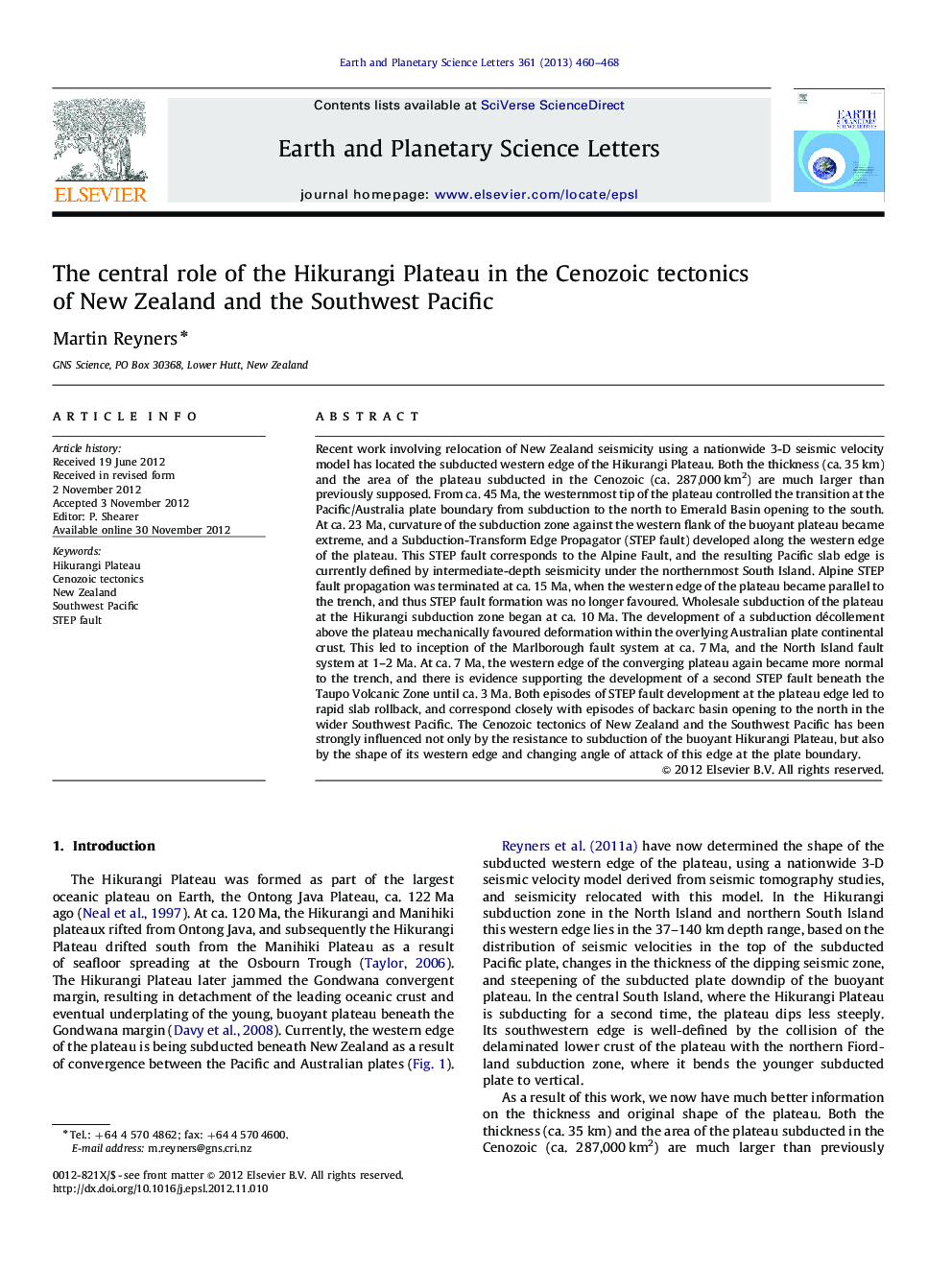| کد مقاله | کد نشریه | سال انتشار | مقاله انگلیسی | نسخه تمام متن |
|---|---|---|---|---|
| 4677197 | 1634792 | 2013 | 9 صفحه PDF | دانلود رایگان |

Recent work involving relocation of New Zealand seismicity using a nationwide 3-D seismic velocity model has located the subducted western edge of the Hikurangi Plateau. Both the thickness (ca. 35 km) and the area of the plateau subducted in the Cenozoic (ca. 287,000 km2) are much larger than previously supposed. From ca. 45 Ma, the westernmost tip of the plateau controlled the transition at the Pacific/Australia plate boundary from subduction to the north to Emerald Basin opening to the south. At ca. 23 Ma, curvature of the subduction zone against the western flank of the buoyant plateau became extreme, and a Subduction-Transform Edge Propagator (STEP fault) developed along the western edge of the plateau. This STEP fault corresponds to the Alpine Fault, and the resulting Pacific slab edge is currently defined by intermediate-depth seismicity under the northernmost South Island. Alpine STEP fault propagation was terminated at ca. 15 Ma, when the western edge of the plateau became parallel to the trench, and thus STEP fault formation was no longer favoured. Wholesale subduction of the plateau at the Hikurangi subduction zone began at ca. 10 Ma. The development of a subduction décollement above the plateau mechanically favoured deformation within the overlying Australian plate continental crust. This led to inception of the Marlborough fault system at ca. 7 Ma, and the North Island fault system at 1–2 Ma. At ca. 7 Ma, the western edge of the converging plateau again became more normal to the trench, and there is evidence supporting the development of a second STEP fault beneath the Taupo Volcanic Zone until ca. 3 Ma. Both episodes of STEP fault development at the plateau edge led to rapid slab rollback, and correspond closely with episodes of backarc basin opening to the north in the wider Southwest Pacific. The Cenozoic tectonics of New Zealand and the Southwest Pacific has been strongly influenced not only by the resistance to subduction of the buoyant Hikurangi Plateau, but also by the shape of its western edge and changing angle of attack of this edge at the plate boundary.
► The western edge the Hikurangi Plateau has controlled New Zealand Cenozoic tectonics.
► The Alpine Fault developed as a STEP fault along the western edge of the plateau.
► The shape of the western edge of the plateau has also controlled SW Pacific tectonics.
Journal: Earth and Planetary Science Letters - Volume 361, 1 January 2013, Pages 460–468